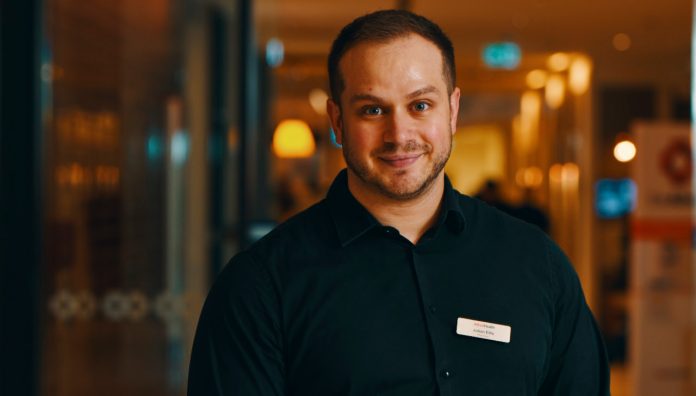Finding his niche in neuroscience, the Alfred Hospital’s Julian Ellis MPS, is championing brain-related disease management in all facets of pharmacy.
How did you wind up in Melbourne and in a hospital role?
As part of my post-graduate Doctor of Pharmacy program, I wanted to experience a different healthcare system from Canada’s. I was fortunate enough to do my final clinical rotation at the Royal Melbourne Hospital. Once fully registered here, a position came up at the Alfred Hospital. I have loved practising pharmacy in Australia and have decided to make it home.
Where did your passion for neurology pharmacy come from?
I have long found brain and brain-related diseases fascinating. In my past roles, I have provided smoking cessation counselling to recent stroke survivors, compounded alternative dosage forms for children with genetic neurological conditions, and worked on medicine compliance strategies for epilepsy or dementia.
What aspects of your job most benefit patients or have had demonstrable effects?
Having pharmacists on ward rounds and making clinical interventions at the point of decision-making is of huge benefit. My team has worked hard to ensure our stroke patients are discharged with appropriate antithrombotic, antihypertensive and lipid-lowering plans. Based on 2019 data, only 2.6% patients of Alfred patients had a recurrent stroke at the 145-day follow-up, compared to the national average of 4.3%.
Is your career trajectory for everyone or is there a better route for young pharmacists?
I have worked in hospital pharmacy, primary-care practices and community pharmacy. There is definitely a more direct route for people who know they want to specialise in hospital practice. But I’d suggest being open to opportunities.
Is hospital pharmacy the only way for pharmacists to specialise in neurology?
Hospital pharmacy is a great opportunity to specialise in neurology. However, much can be done in all settings for patients with neurological conditions. I work very closely with my patients’ community pharmacist so that they can understand what follow-up is needed. Community pharmacists can do some really amazing specialised work through their clinical services.
Where would you like your career to go?
I would love to end up either researching or working in clinical design to improve the efficiency of our health system and outcomes for patients.
Is it important to keep fit in pharmacy?
Absolutely! As a stroke pharmacist, I see the importance of a healthy lifestyle. Mental fitness is just as important. Burnout in healthcare is a serious issue that we’re only starting to discuss. I love to explore the great hiking trails in Victoria for both my physical and mental wellbeing.
A day in the life of Julian Ellis,
|
Further resources
Want to find out more about different career pathways for pharmacists? Visit www.psa.org.au/careerpathways



 Professor Margie Danchin[/caption]
Professor Margie Danchin[/caption]

 Dr Peter Tenni[/caption]
Dr Peter Tenni[/caption]
 How should we deprescribe gabapentinoids, according to the Maudsley Deprescribing Guidelines[/caption]
How should we deprescribe gabapentinoids, according to the Maudsley Deprescribing Guidelines[/caption]



 Pharmacists have always prescribed, but they have the potential to prescribe much more
Pharmacists have always prescribed, but they have the potential to prescribe much more




